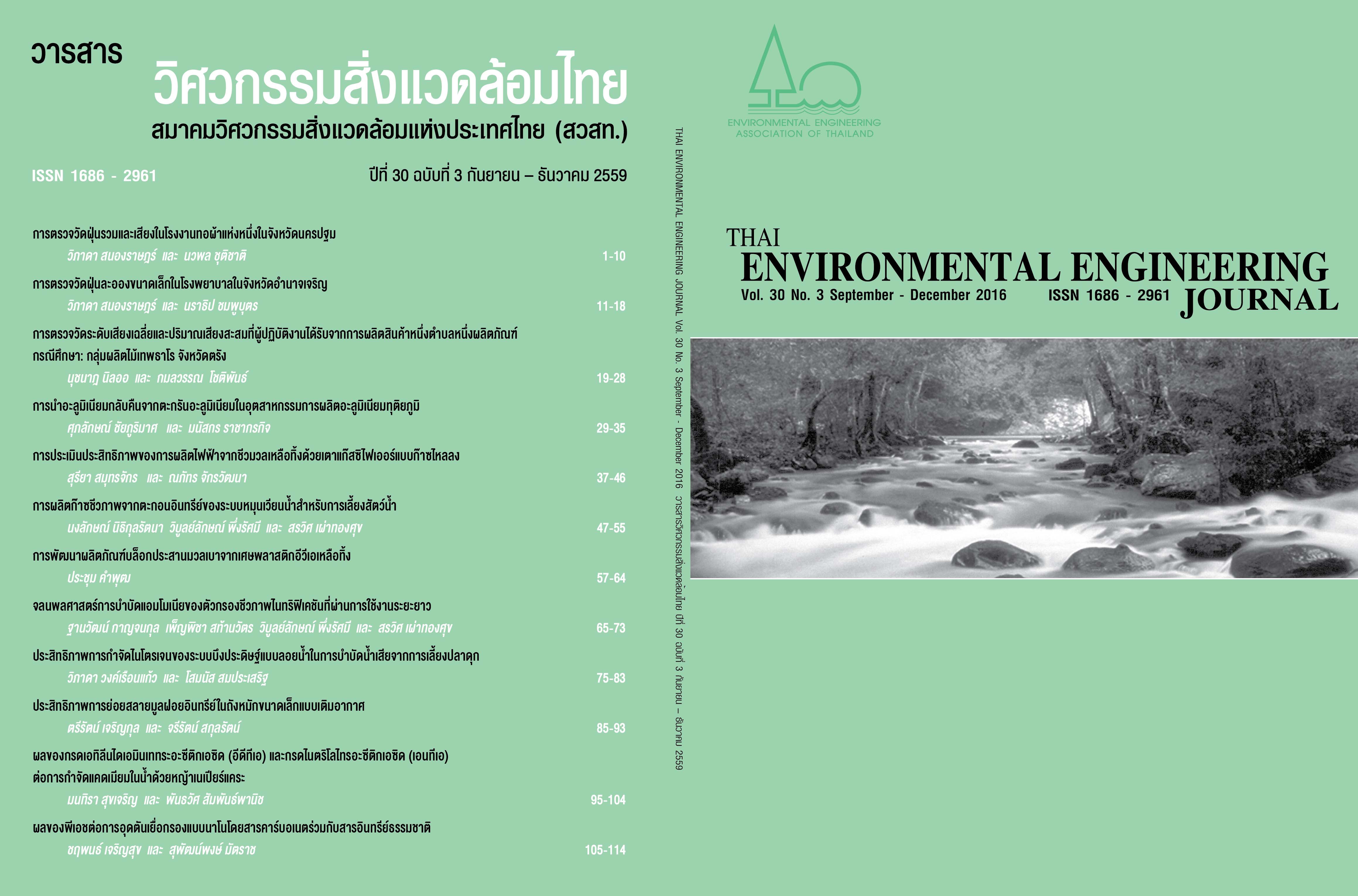Biogas Production from Organic Wastes from Recirculating Aquaculture Systems
Main Article Content
Abstract
The biogas production from organic wastes from the recirculating aquaculture systems was conducted in this study. The experiment aimed to evaluate biogas production potential with 3 types of organic wastes including (1) Biofloc ; suspended solid collected from biofloc aquaculture system (2) Feces ; fish feces was separate from recirculating aquaculture tank by continuous sludge separator and (3) Sludge ; aquaculture sludge that consist feces and uneaten feed from recirculating aquaculture tank. Moreover, the optimal ratio between organic waste and biogas inoculum i.e. 1:4, 2:3, 1:1, 3:2 and 4:1 were evaluated as to provide the maximum biogas yield. The experiment was conducted in 100 ml serum bottles using Biochemical Methane Potential (BMP) technique for 42 days. It was found that feces had the highest biogas and methane production of 347.65 + 32.95 mL/g VS substrate and 175.28 + 16.62 mL CH4/g VS substrate, respectively. The optimal substrate to inoculum ratio at 3:2 gave the highest biogas production rate of 361.93 + 3.68 mL/g VS substrate with 58.23% methane content.
Article Details
References
[2] Moody, L., R. Burns, W. Wu-Haan and R. Spajie. 2009. Use of Biochemical Methane Potential (BMP) Assays for Predicting and Enhancing Anaerobic Digester Performance. In; 44th Croatian & 4th International Symposium on Agriculture: 930-934.
[3] APHA. 1998. American Public Health Association Standard Methods for the Examination of Water and Wastewater. 20th ed. Washington, DC: A PHA and American Water Works Association and Water Environment Federation.
[4] Verma, Shefali. 2002. Anaerobic digestion of biodegradable organics in municipal solid wastes. Diss. Columbia University.
[5] Gebauer, R. and B. Eikebrokk. 2006. Mesophilic anaerobic treatment of sludge from salmon smolt hatching. Bioresource Technol. 97(18): 2389-2401.
[6] Rajagopal, R., Massé, D. I. and Singh, G. 2013. A critical review on inhibition of anaerobic digestion process by excess ammonia. Bioresource Technol. 143, 632-641.
[7] Kheiredine, B., Derbal, K. and M. Bencheikh-Lehocine. 2014. Effect of Inoculums to Substrate Ratio on Thermophilic Anaerobic Digestion of the Dairy Wastewater. Chem. Eng. Technol. 37: 865-870.
[8] Rittmann, B.E. and McCarty, P.L. 2000. Environmental Biotechnology: Principles and Applications. 1st ed. New York, McGraw-Hill


